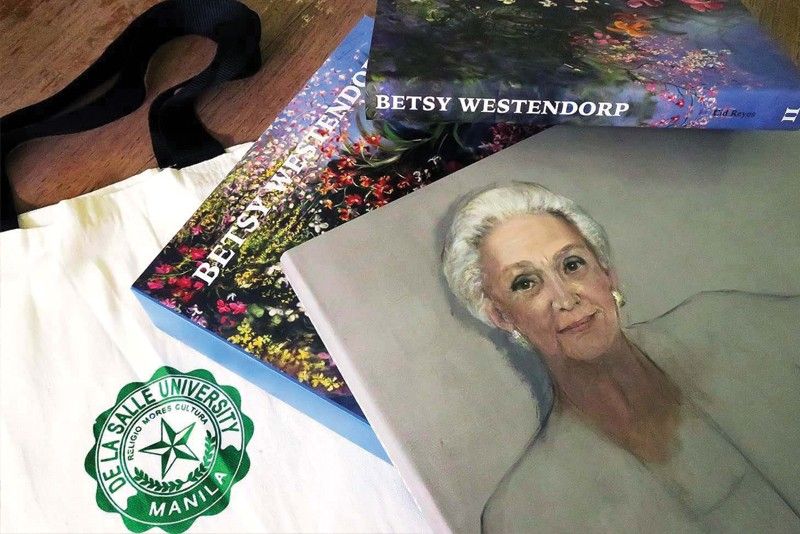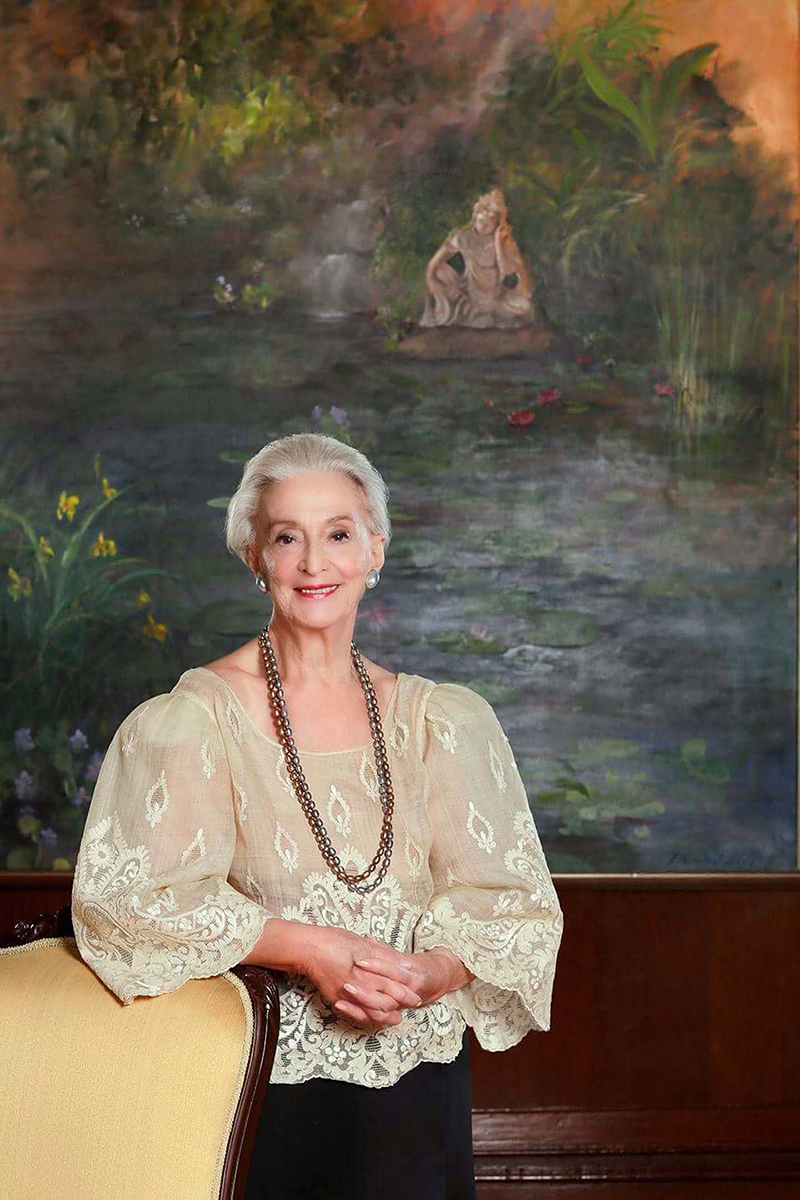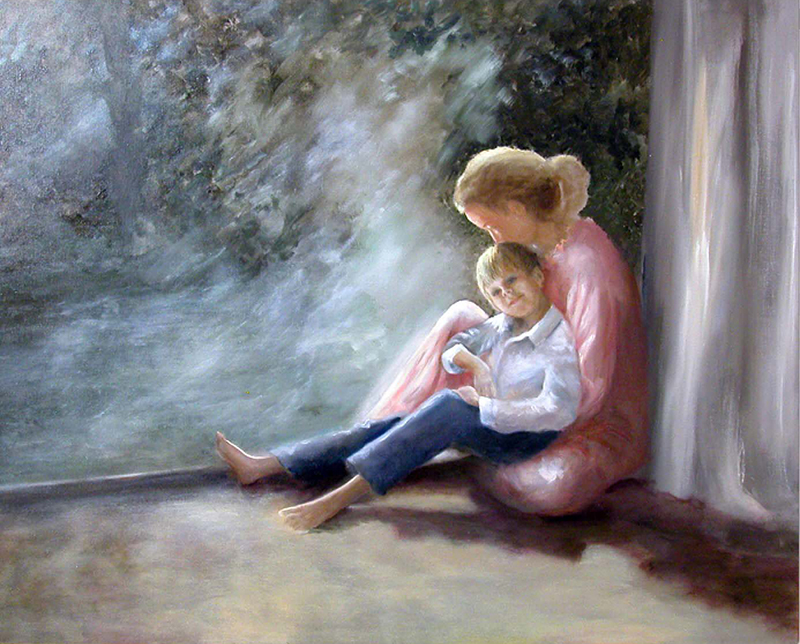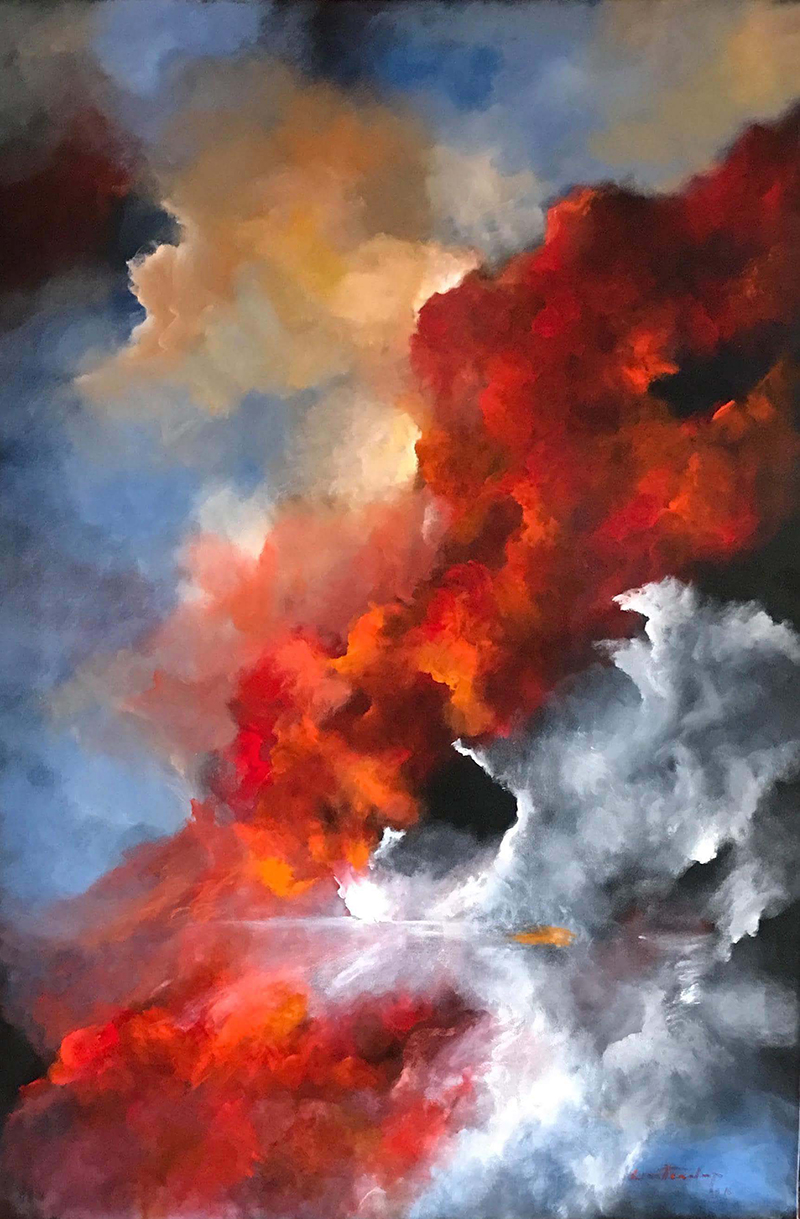Betsy Westendorp: A voluminous life and art


Incandescent is the attention with which Betsy Westendorp inflects her paintings of flowers, which are breathtaking in their chromatic intensity. One can almost smell their heady, powerful fragrance.
In the hyperactive Philippine art scene of today, it is affirming that there are artists such as Betsy Westendorp who pause and paint nature’s inexhaustible beauty—explosive sunrises and sunsets seeping through the atmosphere and scattering a wide range of succulent colors, flowers cascading in their multi-petalled glory, landscapes pulsing with the beat of creation. That she has been doing this all her life (Westendorp is now 90 and shows no sign of slowing down) makes it all the more extraordinary: a life devoted to the revelation of nature through the magic of pigment.
Her life and art are summarized in the two-volume coffee table book eponymously titled and published by the De La Salle University Publishing House. Launched recently at the Metropolitan Museum of Manila, the publication heralds the contribution of the expatriate artist to Philippine art, who joins the formidable list of foreigners, such as Fernando Zobel and Juvenal Sanso, whose depictions of local color have become part and parcel of our heritage and collective imagination. That a university press, under the leadership of David Jonathan Bayot, has undertaken this formidable project, indicates how vital and significant the artist’s visual repertoire is.

Taken by ace lensman Wig Tysmans, the portrait shows the artist against one of her works in the collection of Malacañang.
Written by Cid Reyes and designed by Iñigo Cerdan, the book set is lavish in its survey of Westendorp’s body of work, most of the time devoting a page or two to a single work, with minimal text and captions. Once taken out of the protective box case, the first volume, graced by a self-portrait, features the artist’s famed portraits and landscapes, while the second volume, which teems with Westendorp’s dripping orchids, puts the spotlight on her works at the Malacañang Palace, her evocations of fauna, barong-barong, and sea life.
It is in the second volume, under the chapter “Atmosferografias,” where her renditions of breathtaking sky take center stage — some of her best and enduring works. Art writer Elena Flórez (whose critique is reproduced in the first volume in its original typewritten glory complete with the critic’s own edits — a touch of the archive — and is translated from the Spanish by the artist’s daughter, Isabel Brias Westendorp) states: “The firmament turns into a scenario of insurmountable beauty. Here, creation has given to art its most gorgeous miracle of aesthetic spontaneity.”

Westendorp painted several versions of this scene featuring her daughter Isabel and grandson Ian.
Now collected together in the medium of the book, Westendorp’s works constitute some kind of a permanent retrospective, revealing not only thematic preoccupations but stylistic strategies, visual and conceptual turns, points of contemplation. While she is forthright with her portraits (the gleaming pearls around the throat, the diaphanous quality of our Filipiniana dresses), imbuing her sitters with ease and elegance, she is impressionistic with her landscapes that are redolent with atmospheric effects, capturing the essential mood of the moment, as though the light had been permanently captured by mist or the haze of timelessness itself. Incandescent is the attention with which the artist inflects her paintings of flowers, which are breathtaking in their chromatic intensity. One can almost smell their heady, powerful fragrance.
In the introduction of the book, Cid Reyes states that Westendorp’s main contribution is how the artist has “subjected staple Philippine subject matter through a new and fresh field of vision. There is a feeling not of a mere visual re-acquaintance, but one of total discovery, so that our relationship with the natural bounty of our country has acquired a deepened intimacy and pride.” We are fortunate to have access to Betsy Westendorp’s revelatory visions through this marvelous heft of a publication.

An example of Atmosferografia painting, “Passage” was painted in honor of Westendorp’s daughter Isabel who passed away in 2016 — “a loving memorial to her lost Isabel in a physical space that exudes the pure unalloyed ardor of Spain.” It is now part of Instituto Cervantes de Manila collection.
* * *
The two-volume book set is available at the De La Salle University Publishing House (Taft Ave. Manila), Othello (2/F Power Plant Mall New Wing), and Provenance Art Gallery (Shangri-La at the Fort).



















